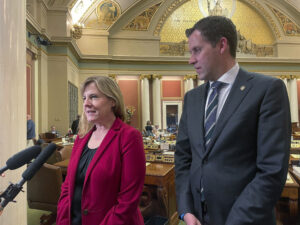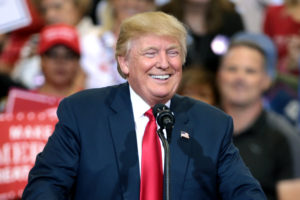Obama on the Color Line
Here’s a question we might consider: Does Obama want us to talk about race while he effectively sidesteps the conversation himself?Does Obama want us to talk about race while he effectively sidesteps the conversation himself?
In his first major comment on race and race relations in our nation since his “A More Perfect Union Speech” on March 18, 2008, President Barack Obama called for frank discussion about race last week. In both a speech to the National Urban League and on the ABC daytime talk show “The View,” the president talked about race relations in the context of the political controversy over last month’s firing of longtime Agriculture Department employee Shirley Sherrod.
Obama agreed with those who have been calling for some sort of national conversation on race beyond CNN’s “Black in America” and “Latino in America.” He invited us to “look inward” and find the space to have “mature” dialogues about “the divides that still exist.” For Obama, these honest conversations should be based on our personal experiences and occur “around kitchen tables and water coolers and church basements.” However, many are left wondering whether Obama’s remarks represent a racial dialogue initiative or a post-racial accomplishment.
Here’s a question we might consider: Does Obama want us to talk about race while he effectively sidesteps the conversation himself?
Obama appeared to begin his part of the conversation with a statement and a story that deserve attention. The statement, aired on “The View,” was an answer to questions about Obama’s own experience as an African-American of multiracial ancestry. As the president put it, “We are sort of a mongrel people.” Elaborating on his use of what can be considered an offensive term, he said, “I mean we’re [African-Americans] all kinds of mixed up. That’s actually true of white people as well, but we just know more about it.”
Some might argue that statements like this one are clever attempts to use multiracial identity to sanitize the country’s history of chattel slavery and racist discrimination. After all, Obama made no mention of how black and white people got “all kinds of mixed up” in the first place. It follows that if we hear Obama from this perspective, then we may be hearing a call to transcend race without getting beyond racial inequalities. On the other hand, there are those who assert that Obama makes use of his multiracial identity to do precisely the opposite: to acknowledge racial division as well as its problems and awkwardness. If we hear Obama from this perspective, then we can identify with the call for a more equitable future without “bogus” racial controversies and can recognize the giant strides made since the slavery and segregation eras.
The second of Obama’s noteworthy remarks is a story that closed his speech to the National Urban League. The story is about a letter “from Na’Dreya Lattimore, 10 years old — about the same age as [his daughter] Sasha.” In the letter Na’Dreya wrote “about how her school had closed, so she had enrolled in another. Then she … bumped up against other barriers to what she felt was her potential. So Na’Dreya was explaining … how we need to improve our education system. She closed by saying this … ‘You need to look at us differently. We are not black, we’re not white, biracial, Hispanic, Asian, or any other nationality.’ No, she wrote — ‘We are the future.’ Na’Dreya, you are right.”
By agreeing with Na’Dreya it seems that Obama is inviting us to consider perspectives of the next generation, which sees the possibility for liberation from the burden of older racial narratives. By focusing on the ways in which individuals and societies can create positive change through open dialogue, Obama presents us with an occasion to reconsider what W.E.B. Du Bois called “the problem of the color line.” But therein lies the paradox. By agreeing with Na’Dreya, Obama ignores a racially differentiated nation. And, as a result, important questions raised by this letter go unanswered. Why did Na’Dreya’s school close? What were the “other barriers” that hindered the girl’s potential?
Few can embody and embrace these changing concepts of race talk like President Obama. His multiracial identification allows him to relate and communicate with multiple audiences, suggesting that it can be a tool to question the construction of the color line. However, because multiracial identification capitalizes on the absence of reliable evidence of difference among racial groups, it begs the question of whether we can actually say anything about race now that differs substantially from what we have been able to say about it historically. In light of this, it may be most appropriate to understand our present moment as our president suggests: as one of racial dialogue initiation and not as a post-racial monologue or epilogue.
Your support matters…Independent journalism is under threat and overshadowed by heavily funded mainstream media.
You can help level the playing field. Become a member.
Your tax-deductible contribution keeps us digging beneath the headlines to give you thought-provoking, investigative reporting and analysis that unearths what's really happening- without compromise.
Give today to support our courageous, independent journalists.









You need to be a supporter to comment.
There are currently no responses to this article.
Be the first to respond.